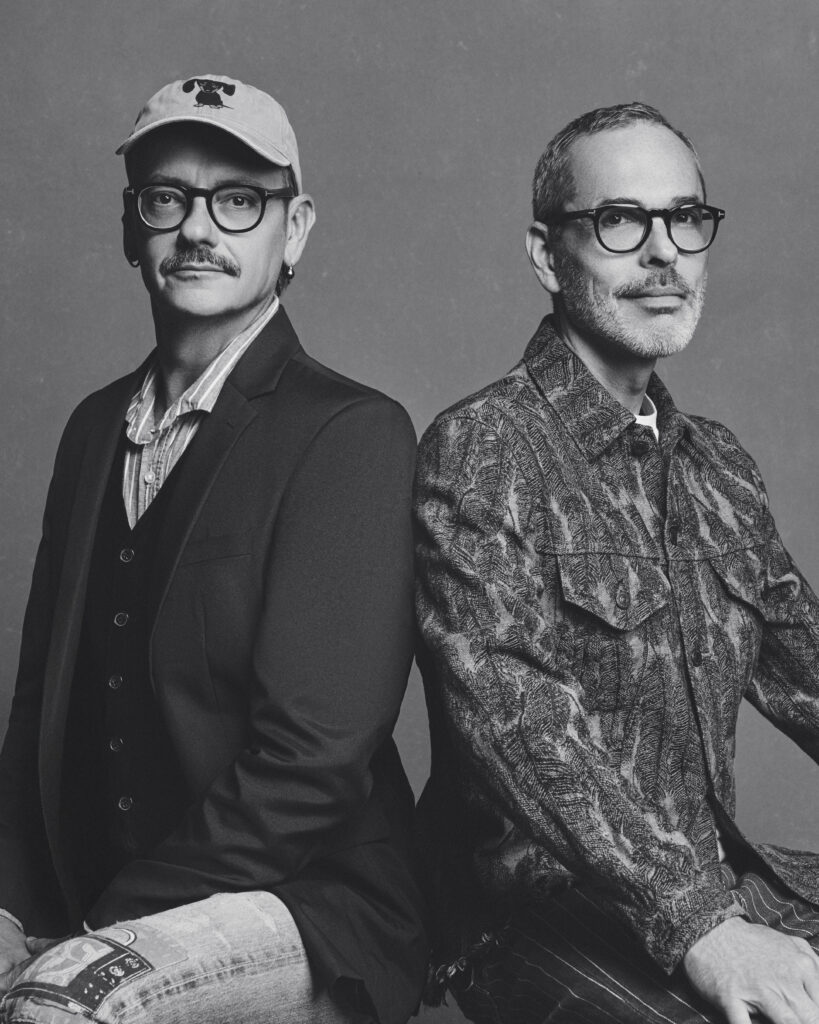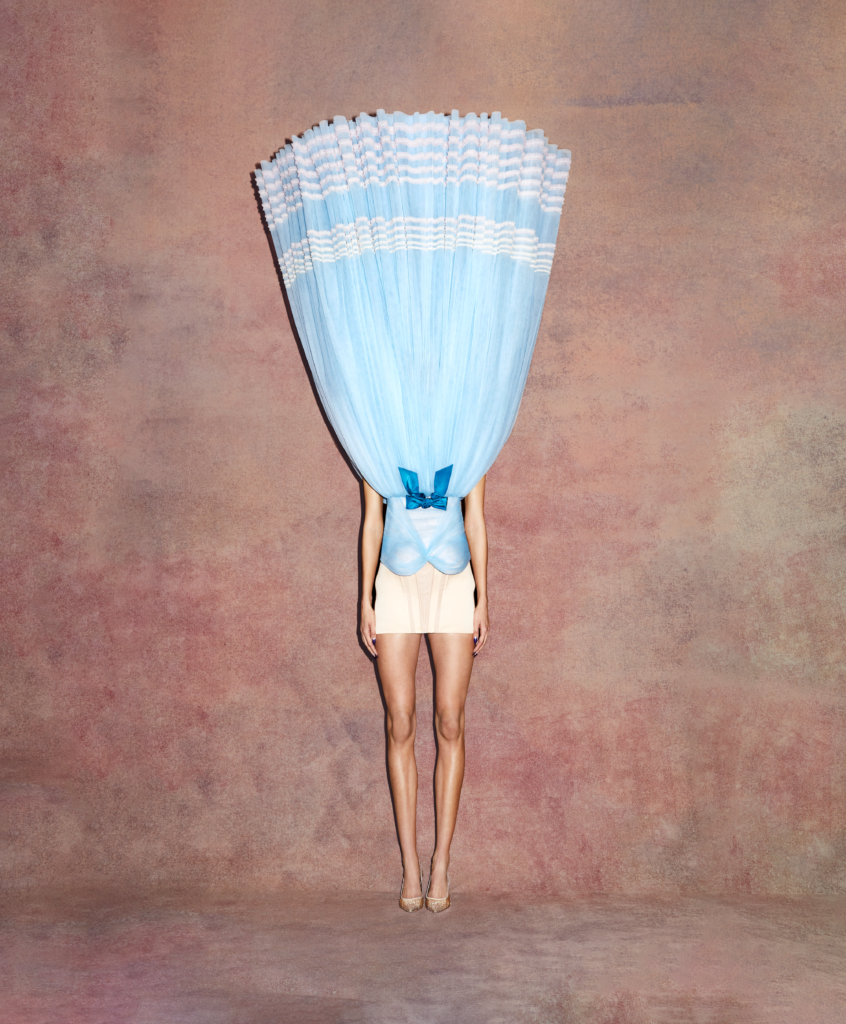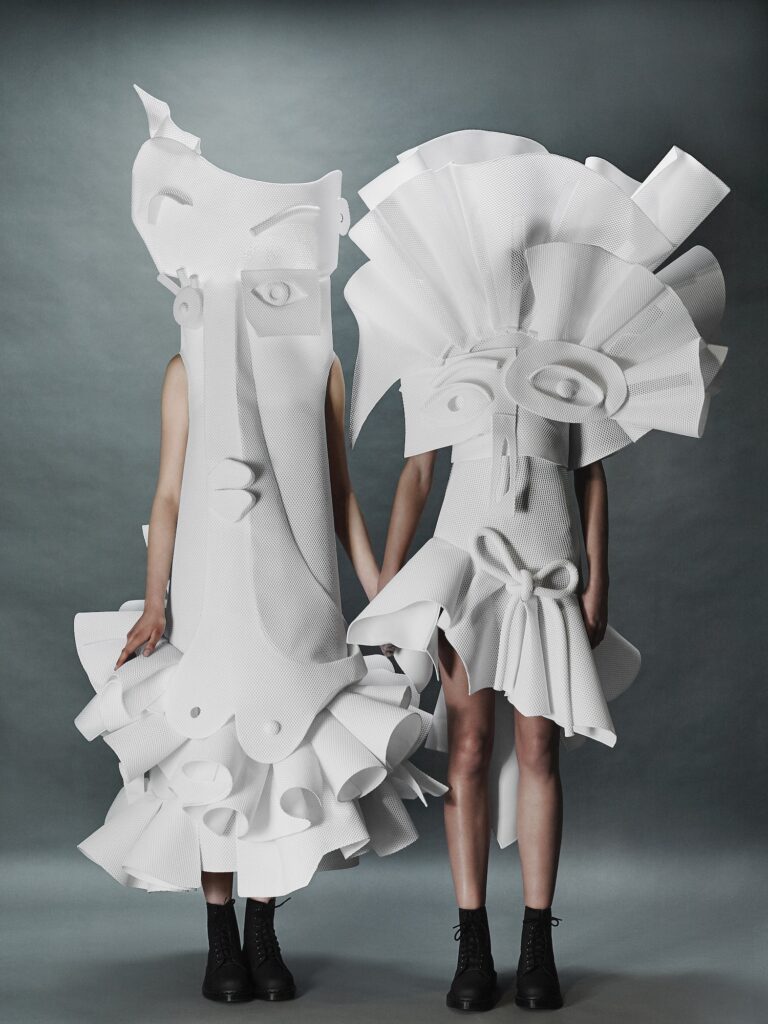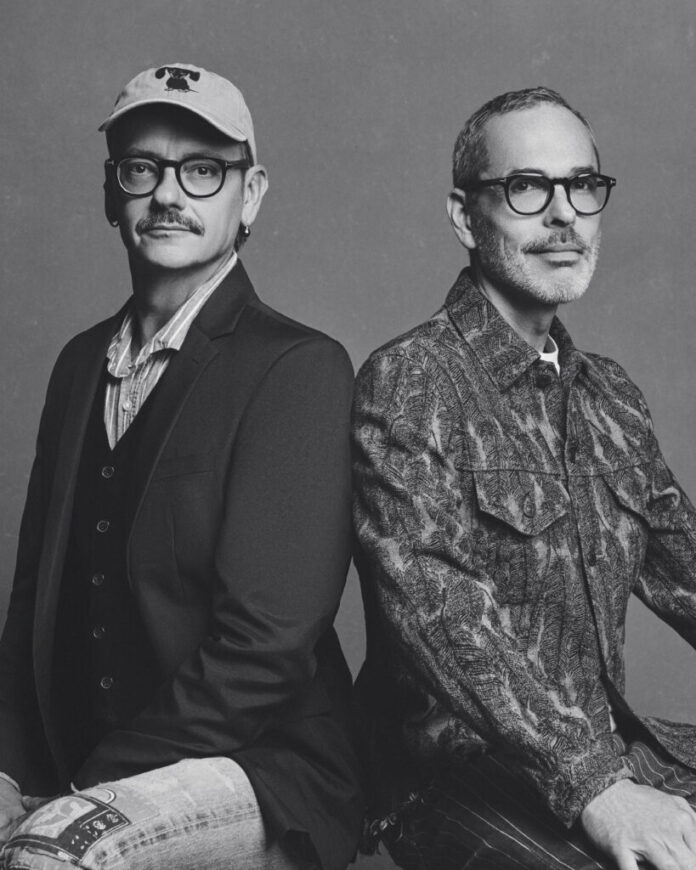Edited by Mikkel Hyldebrandt
Photos Courtesy of the High Museum

For more than three decades, Dutch fashion artists Viktor Horsting and Rolf Snoeren—known collectively as Viktor & Rolf—have challenged the very notion of what fashion can be. Often described as the industry’s consummate outsiders, they have nevertheless carved out a space where haute couture and art collide with breathtaking originality. Their creations do not simply adorn the body; they provoke, amuse, unsettle, and astonish. This fall, the High Museum of Art in Atlanta will be the exclusive U.S. venue to present the first major retrospective of their work, organized by curator Thierry-Maxime Loriot and the Kunsthalle Munich in Germany, where the exhibition debuted earlier this year.
The retrospective will feature more than one hundred works spanning the duo’s career, each one a testament to their mastery of craft and willingness to defy convention. Garments from more than thirty of their collections will be on view, alongside a selection of their enigmatic “works-in-progress dolls”—delicate porcelain figures dressed in miniature couture. Accompanied by elaborate animated projections created by the acclaimed visual effects studio Rodeo FX, the exhibition promises to be as immersive and theatrical as Viktor & Rolf’s most daring runway shows.
Outsiders Who Redefined Fashion
From the beginning, Viktor & Rolf positioned themselves at a distance from the commercial machinery of fashion. After meeting while studying at the prestigious Arnhem Academy of Art and Design in the late 1980s, the two began collaborating almost immediately, united by a shared skepticism toward the fashion system and a burning desire to treat clothing as a conceptual art form. In 1993, they relocated to Paris and launched their label, quickly attracting attention for their experimental presentations, which often took the form of gallery installations rather than conventional runway shows.
It was clear from the start that Viktor & Rolf were not interested in trends or retail-driven collections. Instead, they sought to interrogate the very structures of fashion itself: What makes a garment wearable? What makes fashion “luxury”? And, perhaps most importantly, how can clothing function as an idea, a statement, or even a performance?

The Drama of Couture
The duo’s couture collections often blur the line between theater and fashion. Who could forget the 1999 collection in which models walked backwards down the runway, their dresses fastened on in reverse? Or their Spring 2019 collection, a viral sensation, in which gowns were emblazoned with meme-worthy slogans like “I’m not shy, I just don’t like you” and “No photos please.” Such designs reveal their uncanny ability to capture both the zeitgeist and the timeless desire for spectacle.
At the same time, Viktor & Rolf demonstrate impeccable technical prowess. Their designs are not mere provocations but meticulously constructed garments, rooted in a deep knowledge of couture traditions and fashion history. They have reinterpreted everything from the crinoline to the smoking jacket, often exaggerating proportions to surreal effect. It is this combination of conceptual daring and technical mastery that sets them apart.
Fashion’s Favorite Collaborators
Though they call themselves outsiders, Viktor & Rolf’s influence reverberates through the worlds of music, art, and celebrity culture. Their designs have been embraced by some of the most daring performers of our time, including Madonna, Lady Gaga, Cardi B, and Tilda Swinton. Each collaboration underscores the theatricality of their work, garments designed not simply to be worn but to communicate.
Dolls, Dreams, and Other Obsessions
One of the most intriguing elements of the retrospective is the inclusion of the designers’ works-in-progress dolls. These antique-inspired porcelain figures, dressed in miniature versions of couture garments, reveal the intimate process behind the spectacle. They act as both sketches and finished works, embodying the designers’ fascination with transformation, fantasy, and play.
The exhibition also extends beyond the garments themselves, thanks to the artistry of Rodeo FX, whose projections will envelop visitors in a dreamlike environment. Much like Viktor & Rolf’s own shows, where staging and choreography are inseparable from the clothing, the exhibition becomes a total artwork—an experience rather than a display.

What makes Viktor & Rolf so vital is not simply their daring designs but the intellectual rigor behind them. They approach fashion as a medium of ideas, as likely to reference Dada, Surrealism, or Baroque portraiture as to riff on contemporary pop culture. Their work asks us to see clothing not only as functional or beautiful but as a vehicle for storytelling, critique, and wonder.
For Atlanta, hosting the exclusive U.S. presentation of this retrospective is no small coup. Visitors will have the chance to see, up close, the garments that have redefined the possibilities of couture and cemented Viktor & Rolf’s place in both fashion and art history.
As Viktor & Rolf themselves might say: these are not just clothes. They are dreams, manifest in silk, tulle, and sequins—proof that fashion, at its highest level, is art.
—
Viktor&Rolf. Fashion Statements will be showing at the High Museum October 10, 2025 – February 8, 2026. Learn more at high.org

